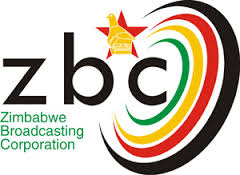Story by Abigirl Tembo, Health Editor
The Health Resilience Fund coordinated by the Ministry of Health and Child Care has improved health care for vulnerable members of the community in hard-to-reach areas.
Instead of walking 60 kilometres to the nearest health centre for routine immunisation and contraceptives, women from Basi Village in Chiredzi and surrounding areas are now relying on monthly outreach programmes conducted by the government through the Health Resilience Fund (HRF).
“I stay in Village 8 and very far from the nearest clinic, so I look forward to these outreaches because I can monitor my baby‘s growth and at the same time she will get her immunisation shots, like today she got her vitamin A supplement,” said a villager.
Another said, “I have a ten-year-old daughter and she got her first HPV dose today here at the school. At least now I know that this will protect her from getting cancer. My other daughter also got her diphtheria and tetanus shot here of which I am grateful.”
Through the Health Resilience Fund, village health workers who oversee disease monitoring and surveillance are undergoing training on emerging and reemerging diseases such as polio and cholera.
“We got training on various diseases and we have been moving around villages teaching people how to prevent such diseases like cholera and it’s all thanks to the government and UNICEF. Whenever we get a message that the outreach is coming to our village we then move around the villages spreading the messages to the villagers especially to those with children under the age of five and those with underlying conditions and this has been made possible through the health resilience fund,” a health worker said.
Supported by the European Union and the World Health Organisation, among other partners, the Health Resilience Fund focuses on three pillars: ending preventable maternal, newborn, child and adolescent deaths; global health security; as well as health systems strengthening.
The US$90 million fund has also ensured the availability of essential medicines and commodities in primary healthcare facilities across the country at an average of 80%.
The HRF which will run until 2025 is aligned with the country’s National Development Strategy One (NDS1) and the National Health Strategy (NHS) 2021-2025.
It is also building on the gains of the Health Development Fund which contributed to improving several health indicators, as shown by the 2019 Multiple Indicator Cluster Survey (MICS) and the 2022 National Population and Housing Census.
Improvements were noted in maternal mortality, infant and under-five mortality, adolescent fertility, contraceptive prevalence and chronic malnutrition or stunting.
The maternal mortality ratio, for instance, went down from 614 to 462 per 100 000 live births between 2014 and 2019.
The HRF, thus seeks to accelerate progress towards achieving Universal Health Coverage without suffering financial hardship.
It covers the full continuum of essential health services, from health promotion to prevention, treatment, rehabilitation, and palliative care.
According to the latest UHC index, Zimbabwe is at 55% above the Sub-Saharan Africa average of 46%.




